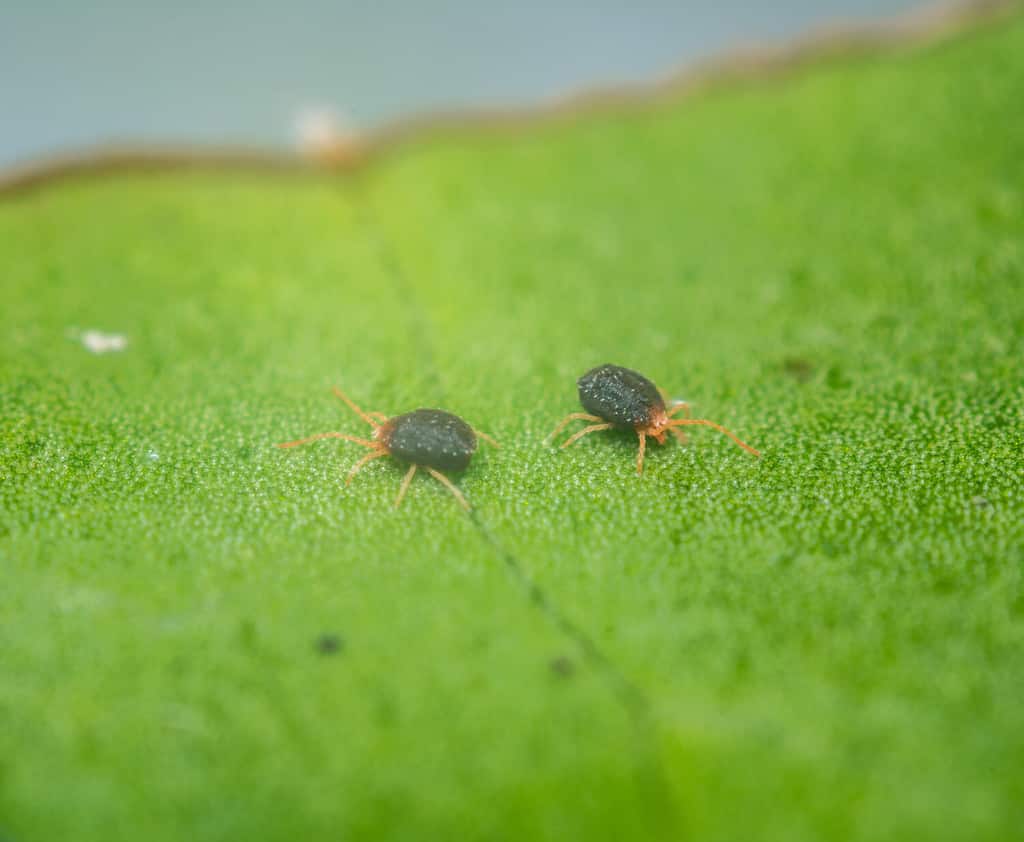It’s essential to understand what mites are and how to know if your dog has them so that they can be treated quickly. Mites cause a lot of discomfort for your dog and present many health issues if left untreated. Read on to learn more about identifying mites on dogs and what to do if your dog has them.
What Are Mites?
First, let’s talk about what mites are. Mites are tiny parasites that live on your dog’s skin or in their ears. They can cause irritation and inflammation, making your dog’s skin very itchy. They can cause dry skin and loss of fur, and in extreme cases cause mange. Unfortunately, mites on dogs are a common threat, so it’s good to know how to identify them so that they can be treated promptly.
Identifying Mites on Your Dog
It’s essential to make sure that it is specifically mites that your dog is dealing with before any treatments can begin. You want to make sure that you’ve properly identified what’s on your dog in case it has another type of pest, such as fleas.
Mites have round, bulbous bodies, and eight legs. Like ticks, this classifies them as arachnids. Mites can also vary greatly in color. Most of them will be either brown, tan, or reddish in color, but they can also be green, red, or even blue.
Mites are similar to ticks but are much smaller. Although a mite’s size can vary depending on what kind of species the mite is, they are usually so small that it cannot be seen with the naked eye. This makes them very hard to identify, since in many cases, you may not be able to physically see the mite itself. The good thing is there will be signs of a mite infection, so you can look out for some of the key symptoms rather than the mites themselves.
How to Spot a Mite Infestation

Ear mites live in dog’s ear canals and surrounding skin causing irritation.
©Glikiri/Shutterstock.com
There are thousands of different mite species world wide. Some of those include clover mites, bird mites, itch mites, house dust mites, scabies mites, and even grain, cheese, mold, and flour mites (which can be found on those items). Most of these mites cannot be seen by the human eye, so you won’t be able to spot them just by looking. The best way to know if your dog is dealing with mites is to be aware of the symptoms that come along with having them.
One of the first and most obvious signs of mites would be itching. Your dog may itch and scratch for many reasons, but itchiness is one of the primary signs of mites on dogs. Other signs of mites are:
- Dandruff
- Loss of hair (either hair loss in patches or all over coat)
- Red skin
- Excessive scratching
- Visible mites
- Mange
Sarcoptic Mange
This is a type of mange that is caused by a parasitic mite (Sarcoptes scabiei). These mites will burrow beneath the surface of your dog’s skin and cause intense itchiness and a red rash to appear. You may be able to tell if your dog has mange based on your dog’s behavior. You may notice that the dog chews and bites at its skin, which causes missing patches of fur, especially on the dog’s legs and belly. If left untreated, you may notice that the dog’s skin is thickening and becoming darker.
Demodectic Mange

Demodectic mange, or red mange, is caused by mites that live in a dog’s hair follicles causing irritation to its skin.
©MDV Edwards/Shutterstock.com
This type of mange is caused by a different type of mite than sarcoptic mange. The parasitic mite that causes demodectic mange is called Demodex canis or Demodex injal. These mites will live in the hair follicles of your dog and cause the same amount of irritation on your dog’s skin. If you were to view one of these mites under a microscope, you would see that it is shaped like a cigar and has eight legs.
This kind of mange is sometimes called Demodex, or red mange. It is also the most common type of mange in dogs. Surprisingly, most dogs and humans have a few of these types of mites on their skin. This is not a cause for worry, since as long as the body’s immune system is functioning properly, the mites will not be able to cause harm.
However, dogs can develop demodectic mange when their immune system is not fully developed or if it has other immune system issues. When its immune system isn’t functioning properly, the number of mites a dog has on its skin can rapidly increase and cause it to develop the disease.
A dog whose immune system is not fully developed, less than 12 months, and up to 18 months old, may have a more difficult time fighting off mites. Beyond this point, the dog’s immune system will mature and they will be less susceptible. If as the dog ages, it experiences a decline in its immune system’s effectiveness, the dog can become susceptible to developing the disease again, since its immune system isn’t as strong as it was before.
How to Treat Mites on Your Dog
The good news is that mites are easy to treat once you’ve pinpointed that this is what your dog is dealing with. Let’s take a look at a few solutions:
Use an Anti-Parasitic Shampoo
Normally, mites can be taken care of by using a simple shampoo that is made for removing mites. You can find anti-parasitic shampoos at most pet stores. Just be sure that before you begin using an anti-parasitic shampoo, you check with your veterinarian to be sure that it is the correct one for your dog’s needs.
You should also be sure to set an appointment with your dog’s veterinarian so that it can be examined and determine if it needs to be prescribed medication to help clear the infestation. Depending on how severe your dog’s infestation is, more than one treatment may need to be used simultaneously.
Give Your Dog an Apple Cider Vinegar Bath
As a more natural alternative to anti-parasitic shampoo, you can also try giving your dog an apple cider vinegar bath. This can help kill off the mites in a natural way. You can do this by adding 1/2 cup of apple cider vinegar as well as 1/2 cup of borax to your dog’s bath water. Make sure that the mixture is completely dissolved before putting your dog in the water. You can then give your dog a bath as normal, just be sure that you don’t let your dog drink the bath water, as the borax could be harmful if ingested.
Clean Your Dog’s Bedding Regularly
While you’re treating your dog for mites with the anti-parasitic shampoo, be sure to keep your dog’s bedding clean. This will help prevent mites from getting in your dog’s bed and reinfecting it as you’re trying to treat the problem. If you’re concerned that your dog has a severe infestation of mites, it may be best to change its bed for a new one.
Can Humans Catch Mites from Dogs?

The common dog mite does not transfer to humans.
©Nik Bruining/Shutterstock.com
Mange, a skin condition triggered by mites, primarily impacts dogs, although certain variations can also affect humans. The most prevalent type of mange in dogs is sarcoptic mange, commonly known as canine scabies.
Sarcoptic mange can be transmitted to humans leading to temporary dermatitis characterized by highly itchy skin lesions that can persist for several weeks.
However, it’s essential to know that Demodex mites and ear mites found in dogs do not transfer to humans.
How to Prevent Mites in Your Dog
The best way to prevent mites is to make sure your dog doesn’t come in contact with another dog that has them, however, this is much easier said than done. There is really no way to know for sure if another dog has mites since you can’t always see them.
One thing you can do is schedule regular check-ups for your dog to make sure that it doesn’t have mites, as well as be on the lookout for the symptoms of mites. If you notice any of them, give your dog a bath with the anti-parasitic shampoo as soon as you can to help get rid of them.
The sooner you begin treating your dog for mites, the less likely your dog will develop a severe infestation of them. It will also help reduce the odds of your dog having to deal with the various types of mange, which causes intense discomfort for dogs and is very contagious (even for humans).
If your dog has recently been treated for mites, you can prevent them from reoccurring by washing all of your dog’s bedding and toys. Clean the areas that your dog spends most of its time in to make sure you kill off any mites that could be lingering. This will help reduce the chances of your dog becoming reinfected.
The photo featured at the top of this post is © Photo-Vista.de/Shutterstock.com
Ready to discover the top 10 cutest dog breeds in the entire world?
How about the fastest dogs, the largest dogs and those that are -- quite frankly -- just the kindest dogs on the planet? Each day, AZ Animals sends out lists just like this to our thousands of email subscribers. And the best part? It's FREE. Join today by entering your email below.
Sources
- Purina, Available here: https://www.purina.eu/dogs/health-and-nutrition/grooming-and-daily-care/spotting-and-treating-mites
- Orkin Canada, Available here: https://www.orkincanada.ca/pests/mites/
- VCA Animal Hospitals, Available here: https://vcahospitals.com/know-your-pet/mange-sarcoptic-in-dogs
- VCA Animal Hospitals, Available here: https://vcahospitals.com/know-your-pet/mange-demodectic-in-dogs
Thank you for reading! Have some feedback for us? Contact the AZ Animals editorial team.







